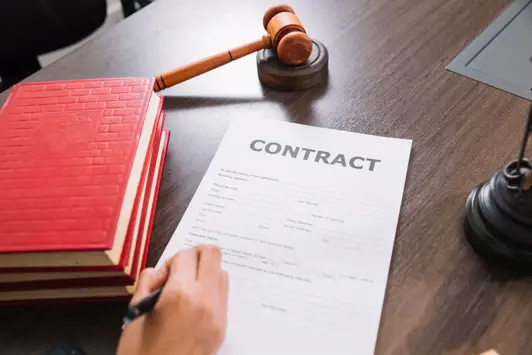Is It Legal to Get 1099 and W2 from the Same Employer
If you work as an independent contractor or a freelancer, you may have received a 1099 form from your client at the end of the year. This form reports the income you earned from that client and the taxes they withheld, if any.
On the other hand, if you work as an employee, you may have received a W2 form from your employer. This form reports your wages, tips, and other compensation, as well as the taxes they withheld and paid on your behalf.
But what if you get both forms from the same employer? Is that legal? And what does it mean for your tax situation? In this blog post, we will explain the difference between 1099 and W2, the legal considerations of getting both forms from the same employer, the factors that influence dual classification, and how to ensure compliance and mitigate risks.
Understanding the Difference between 1099 and W2

What is a 1099
A 1099 form is a type of information return that businesses use to report payments made to non-employees, such as independent contractors, freelancers, consultants, or gig workers. There are different types of 1099 forms, depending on the nature of the payment.
For example, a 1099-NEC reports nonemployee compensation, a 1099-MISC reports miscellaneous income, a 1099-INT reports interest income, and so on. The most common 1099 form for independent contractors is the 1099-NEC.
If you receive a 1099 form from a client, it means that you are not considered an employee of that client. You are responsible for paying your own income taxes and self-employment taxes on the income reported on the 1099 form. You may also be able to deduct certain business expenses related to your work as an independent contractor.
What is a W2
A W2 form is a type of wage and tax statement that employers use to report wages, tips, and other compensation paid to employees. It also reports the federal, state, and local taxes withheld from the employee's paychecks, as well as the Social Security and Medicare taxes paid by both the employer and the employee.
The W2 form also shows other benefits and deductions that affect the employee's taxable income, such as retirement plan contributions, health insurance premiums, or dependent care assistance.
If you receive a W2 form from an employer, it means that you are considered an employee of that employer. You are not responsible for paying self-employment taxes on the income reported on the W2 form.
However, you may still owe income taxes on your wages, depending on your filing status, deductions, credits, and other income sources. Your employer may also provide you with certain benefits and protections that are not available to independent contractors, such as health insurance, paid leave, workers' compensation, unemployment insurance, or minimum wage.
Differences Between 1099 and W2
The main difference between 1099 and W2 is the degree of control and independence that the worker has over their work. Generally speaking, independent contractors have more control over how, when, where, and for whom they work. They can set their own rates and hours, choose their own projects and clients, and use their own tools and methods. They also bear more risk and responsibility for their work outcomes and expenses.
Employees, on the other hand, have less control over their work. They must follow the instructions and policies of their employer regarding their duties, schedule, location, and performance standards. They also receive regular paychecks with taxes withheld and paid by their employer. They may have less flexibility and autonomy in their work but more stability and security.
Legal Considerations

Getting both 1099 and W2 forms from the same employer may raise some legal issues regarding the worker's classification. In the US, the IRS and other agencies use various tests and criteria to determine whether a worker is an employee or an independent contractor for tax purposes.
These tests include factors such as:
- The behavioral control that the employer has over the worker's work activities
- The financial control that the employer has over the worker's pay and expenses
- The relationship between the employer and the worker in terms of contracts, benefits, expectations, and permanence
The IRS presumes that a worker is an employee unless there is evidence to prove otherwise. Therefore, if a worker receives both 1099 and W2 forms from the same employer in the same year, it may indicate that the worker was misclassified as an independent contractor for some or all of their work.
Misclassification can have serious consequences for both the worker and the employer. The worker may face additional taxes, penalties, interest, and audits from the IRS. They may also lose out on valuable benefits and protections that they are entitled to as employees.
The employer may face back taxes, penalties, interest, audits, lawsuits, and fines from the IRS and other agencies. They may also damage their reputation and credibility in the market.
Factors Influencing Dual Classification

However, getting both 1099 and W2 forms from the same employer does not necessarily mean that the worker was misclassified. There may be legitimate reasons why a worker can be both an employee and an independent contractor for the same employer in the same year.
Some of these reasons include:
- The worker performed different types of work for the same employer that required different levels of control and independence.
For example, the worker may have been an employee for their regular job but an independent contractor for a special project or a side gig.
- The worker changed their status from an employee to an independent contractor or vice versa during the year due to a change in their work arrangement or agreement with the employer.
For example, the worker may have quit their job as an employee and started working as an independent contractor for the same employer or vice versa.
- The worker worked for different entities within the same organization that had different tax reporting requirements.
For example, the worker may have been an employee for one subsidiary of a corporation but an independent contractor for another subsidiary of the same corporation.
In these cases, the worker and the employer must ensure that they follow the appropriate rules and regulations for each type of work and each type of form. They must also keep clear and accurate records of their work activities, payments, expenses, contracts, and communications to support their classification and avoid any confusion or disputes.
Ensuring Compliance and Mitigating Risks

If you get both 1099 and W2 forms from the same employer, you should take some steps to ensure compliance and mitigate risks.
Some of these steps include:
- Reviewing your work situation and understanding your rights and responsibilities as an employee or an independent contractor
- Checking your forms for accuracy and completeness and reporting any errors or discrepancies to your employer or client
- Filing your taxes correctly and on time and paying any taxes that you owe
- Claiming any deductions or credits that you are eligible for as an employee or an independent contractor
- Seeking professional advice from a tax preparer, an accountant, a lawyer, or another expert if you have any questions or concerns about your classification or your forms
Getting both 1099 and W2
Getting both 1099 and W2 forms from the same employer can be confusing and complicated. It may indicate that you were misclassified as an employee or an independent contractor for some or all of your work.
It may also indicate that you performed different types of work for the same employer that required different levels of control and independence. In either case, you should be aware of the legal implications and the tax consequences of getting both forms.
You should also take steps to ensure compliance and mitigate risks by reviewing your work situation, checking your forms, filing your taxes, claiming your deductions, and seeking professional advice if needed.
If you need further assistance or support, please do not hesitate to contact Aniday today!
Aniday's HR Services
Headhunting Service
Find and recruit quality candidates in just 1 week! Supported by 40,000 experienced headhunters in IT, Finance, Marketing… capable of recruiting in any region.
Headhunting Service ➔Employer of Record (EOR) Service
On behalf of your business, we recruit employees and handle payroll without the need to establish a company in markets such as Vietnam, Singapore, Malaysia, India, Indonesia…
Employer of Record (EOR) Service ➔